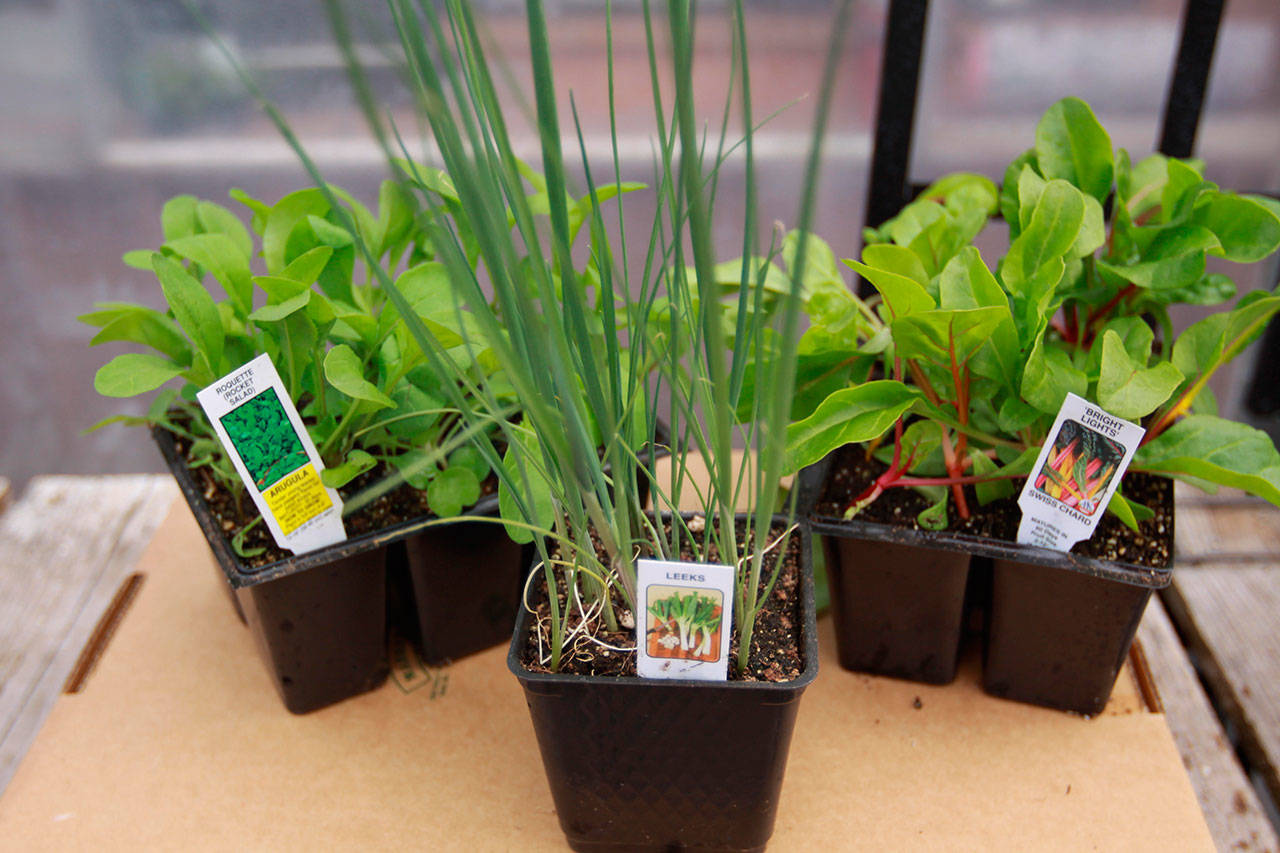By Susan Kalmar
For the Sequim Gazette
People often think it’s hard to grow warm season plants (e.g., tomatoes and peppers) on the North Olympic Peninsula because of our short growing season. That’s a misconception. The growing season in Western Washington is fairly long; the problem is that it’s also cool.
A cool growing season is a problem for plants that need accumulated heat in order to grow, flower, set fruit and successfully ripen.
Growing Degree Days (GDD) is the measure of the heat plants need to successfully mature, especially fruits and vegetables. A GDD unit is the difference between the average air temperature of any given day and a plant’s base temperature, the temperature required to grow.
GDD is not a layman’s calculation. Fortunately, Oregon State University Small Farms team is developing a vegetable degree day website called CROPTIME (extension.oregonstate.edu/croptime), which provides GDD for many crops. But you don’t need a number to know what steps can be taken “heat up your garden” to improve your ability to grow warm season crops.
Two important steps are your plant selections and the manipulation of your microclimate. First, select plants and seeds that were developed for your area or sourced from growers in a similar climate. Selecting varieties that have shorter “days to maturity” will increase the chance to reach full maturity. This information should be on the seed package.
Starting seeds indoors or purchasing starts from a locally sourced grower is another important strategy.
Next, for successful warm season crops, you can modify your microclimate. There are five major components to microclimate: topography, soil, structure (natural and man made), water and vegetation, the first three being the easiest to manipulate.
Topography is multifaceted and can include elevation, sun orientation, slope and even wind. For the purpose of warming a garden it’s important to choose a location with full southern exposure with a natural or fabricated wind screen. It’s also important to identify and avoid low-lying areas (cold sinks) and areas with poor drainage.
Elevation is an aspect of topography not easily adjusted. Frost dates and winter temperatures are affected by as little as a 500-foot increase in elevation.
For growing at higher elevations, it’s always important to keep an eye on the weather and be prepared to cover tender plants.
Soil is important because in order for some plants to germinate, emerge and start to grow in spring, the soil must be warm; warmer for some like tomatoes than for others like spinach, which grows well in cool weather.
Soil warming is affected by the direct absorption of the sun’s energy but is also greatly affected by the soil structure and moisture capacity.
Wet soil absorbs the sun’s energy but loses much of the early warmth due to evaporation. Compacted or heavy clay soils will be much slower to heat up, hindering the growth of heat loving plants. A later winter and spring rains can delay the warming of the soil.
There are ways to encourage the warming of soil by adding amendments to improve structure and/or raised beds to improve drainage.
A physical structure can help alter natural topography to your benefit. Locating warm season beds along a south-facing structure or wall mass can increase warmth, especially if the surface absorbs and holds heat.
Of course, a greenhouse is the ultimate and more permanent structural modification. But less costly measures such as using row covers, cold frames or a simple hoop house can be useful as well.
Susan Kalmar is a Clallam County Master Gardener.
Raise ‘em up
Raised beds are a great way to grow plants where the growing season is cool.
The soil will warm up faster and dry sooner making it easier to get your plants off to a good start.
Keep in mind, they will also require more frequent watering in the summer and fall.
Happy planting!


